"Art has nothing to do with ugliness or sadness. Light is the life of all it touches; so the more light there is in a painting, the more life, the more truth, the more beauty it will have." It is no coincidence that Joaquín Sorolla is known as "the painter of light". The spectacular effects that the Valencian master imprinted on his canvases have yet to be matched by any other artist.
Life through light
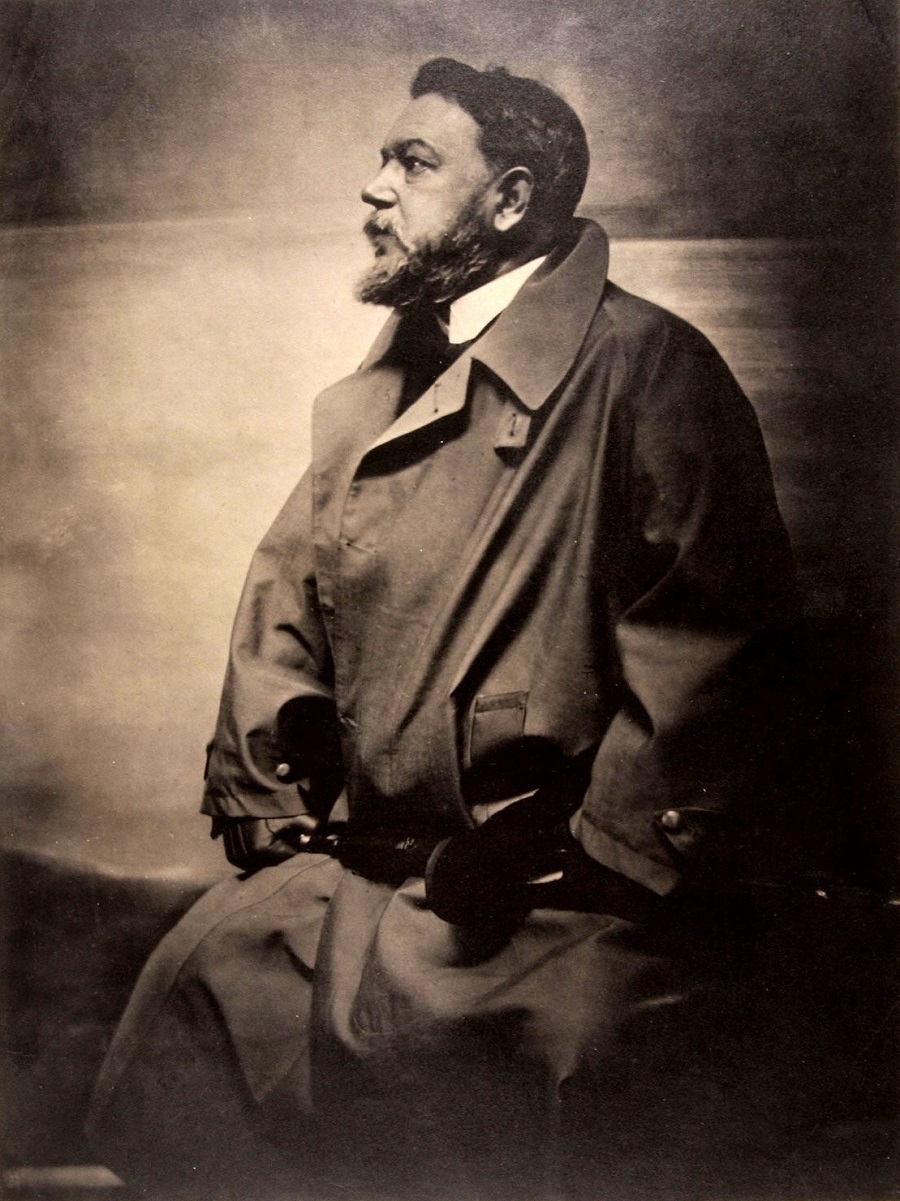
Joaquín Sorolla photographed by Gertrude Käsebier, 1908
"Art has nothing to do with ugliness or sadness. Light is the life of all it touches; so the more light there is in a painting, the more life, the more truth, the more beauty it will have." It is no coincidence that Joaquín Sorolla is known as "the painter of light". The spectacular effects that the Valencian master imprinted on his canvases have yet to be matched by any other artist. The search for life through light was a constant in his work, often imbued with the brightness of the beaches and landscapes of his native Valencia. However, Sorolla's work is not limited to just seascapes, beaches or figures on the seashore. As a painter, he was also a magnificent portraitist and an exceptional portrayer of Costumbrista scenes.
The sheer magnitude of his output would be near impossible to equal, his works coming to almost three thousand paintings, in addition to the more than twenty thousand drawings and sketches he produced throughout his life. His prodigious visual memory enabled him to adopt one of impressionism's remits: that of capturing ephemeral moments or incidents and turning them into works of art. Sorolla was able to remember the light and movement of a scene from a single moment and then capture that scene in his studio. Today, Sorolla's paintings embody and convey the full light of the Mediterranean in each brushstroke and, due to their impressive, innovative qualities, they enjoy a special place in the most important museum collections and art galleries in the world.
Painting, an innate vocation
Joaquín Sorolla y Bastida was born in Valencia in 1863. At the tender age of two years old, the future artist and his sister Eugenia lost their parents to the cholera epidemic sweeping the city. The two orphans were taken in by an aunt and uncle, who assumed responsibility for their education and upbringing. From his earliest years, Joaquin demonstrated an innate passion for art, drawing and painting. His locksmith uncle tried to steer him towards his own trade, to no avail. It was the headmaster at his secondary school who realized how gifted he was and suggested he train at the School of Craftsmen of Valencia. Sorolla enrolled at the age of 13 and two years later moved up to the High School of Fine Arts in Valencia where he was already proving to have extraordinary skills in brushwork and the rendering of realistic images, heavily influenced by Valencian seascape painters such as Rafael Monleón y Torres, among others.
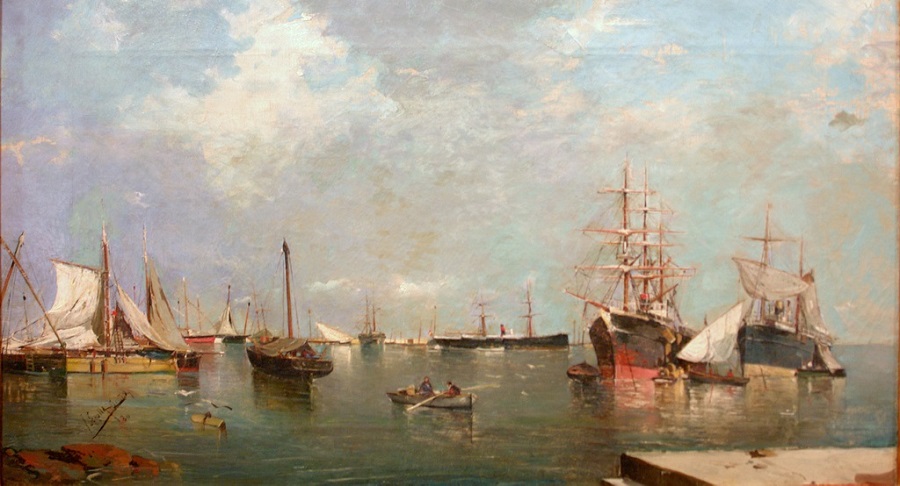
Seascape (1880)
After finishing his studies, Sorolla meets the painter Ignacio Pinazo who introduces him to brand a new way of treating light in painting, a recent trend he had discovered on a trip to Italy. It is the young artist's first contact with Impressionism and, for the rest of his life, his work will adhere to many of its tenets. The fundamentals of this school are already reflected in his first seascapes, three of which he will send to Madrid for participation in the 1881 National Exhibition of Fine Arts. It is around this time that Sorolla met the photographer Antonio García, who would offer him work in his photography studio and whose daughter, Clotilde García, he would end up marrying.
“To get famous, you have to paint dead people"
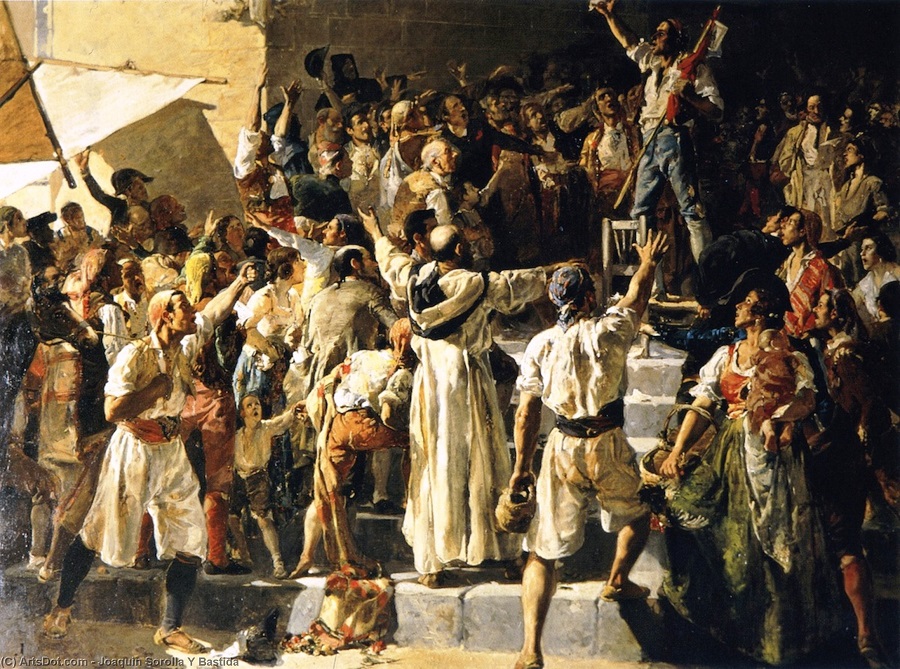
The Cry of the Palleter (1884)
The stringent artistic constraints of late 19th century Valencia did not lend themselves to the restless spirit of the young painter, who nevertheless adapted to its demands in order to succeed. In 1884, the Provincial Council of Valencia convened a painting competition with the winning entry to be awarded a scholarship to complete their studies in Rome. The theme was the 1808 War of Independence. Sorolla submitted his work "The Cry of the Palleter" which made such a deep impression on the jury, they granted him the scholarship. Sorolla accepted the prize with skepticism and irony, confessing to a friend and colleague: "Here, to get famous and win medals, you have to paint dead people."
During this stay in Rome, Sorolla discovers the work of the great Italian Renaissance painters but his admiration is not limited to the classical as he also comes into contact with the work of Mariano Fortuny, whose canvases exert a powerful influence on his future work. This influence is clear in paintings such as "Moor with oranges" in 1887. From Italy, he travels to Paris where he acquires a new social conscience that will see itself reflected in many of his future works. In his early Italian period, he developed the long, powerful brushstroke that would characterize his work in the ensuing years. The presence of light will continue to gain importance in his canvases although this earned him serious criticism in Spain, where it still took precedence over technique and innovation.
Light and social realism. In search of his own style
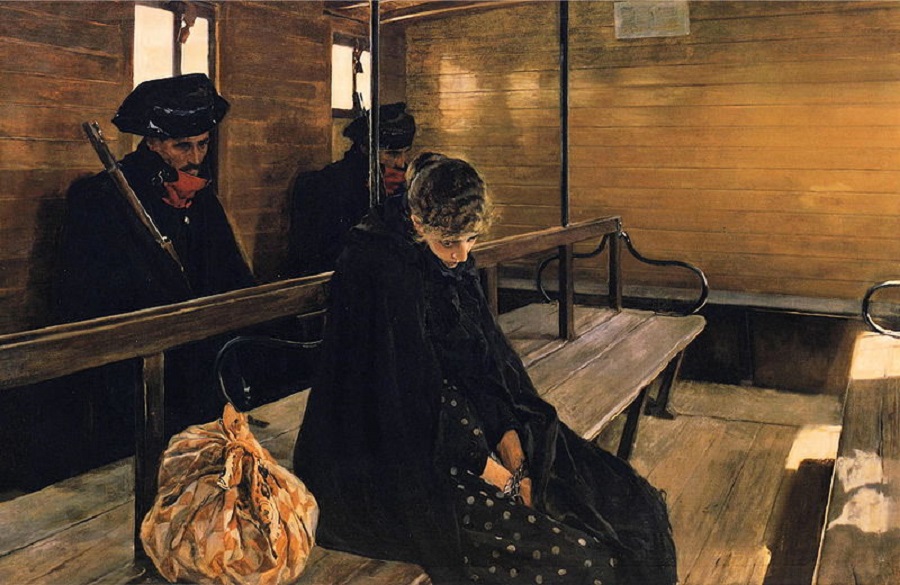
Another Margarete (1892)
By 1889, Sorolla had completed his scholarship and learning period and, accompanied by his now wife Clotilde García del Castillo, returned to Spain where he began a time of consolidation, continuing to search for his own style, which was now beginning to appear in his work. His painting combined passion for the portrayal of an instant in time and light, characteristic of Impressionism, with personal touches (such as long brushstrokes or the use of earthy and black tones). Sorolla also opted to portray topics of a social and realistic nature, which also distanced him from the Impressionism that was triumphing throughout the rest of Europe. A good example is "Another Margarete" (1892), a work depicting an inmate being taken to prison in a train wagon after murdering her son. The title refers to the character of Margarete, one of the protagonists of Goethe's play "Faust". The oppressive and dramatic atmosphere of the canvas is accentuated by the use of light and the depiction of the characters' expressions. It won first prize at the National Exhibition of Fine Arts in 1892.
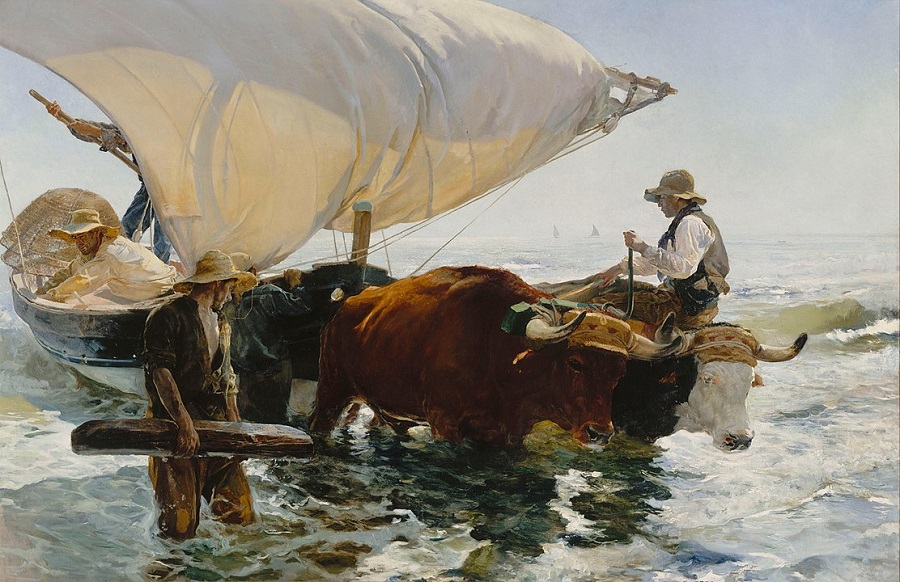
Return Of The Fishing Boat (1894)
In the ensuing years, Sorolla continued to gain recognition, with works such as "And they still say fish is expensive!" and "Return Of The Fishing Boat", both painted in 1894. This latter work in particular marked the moment when he finally hit upon a way to depict light that he had been seeking from the very beginning and which he would adopt in his future works. During these years, he achieved widespread success and popularity, the painting being acquired by the French Government and also winning the Second Place Medal at the Paris Salon in 1895.
On the beach. Brushstrokes and seascapes
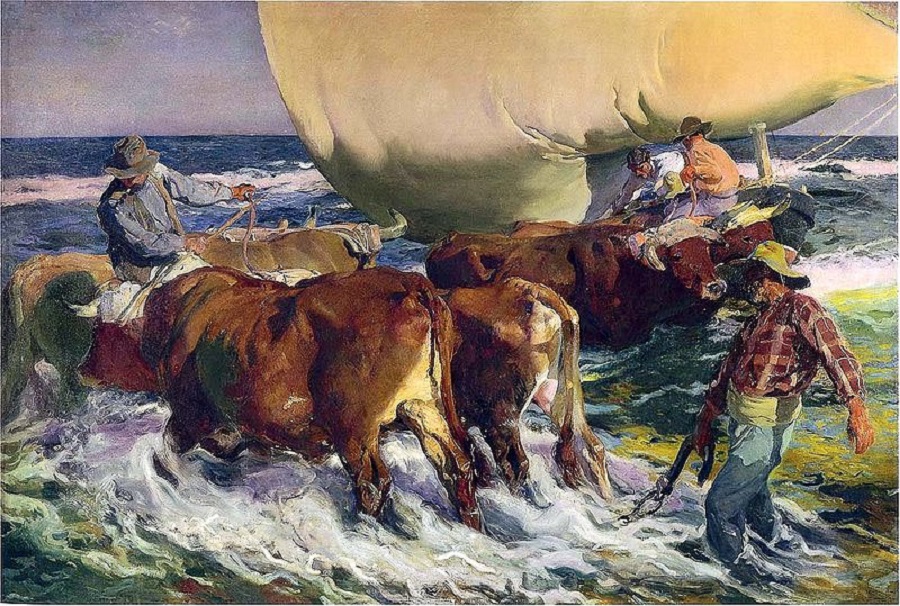
Evening sun (1903)
On the advice of his friend Aureliano Beruete, Sorolla then began working as a portrait artist. He went on to achieve considerable success, painting some of the most important figures in the social, intellectual and political spheres of the day. At the same time, he and his family spent three summers in Jávea, where he painted numerous landscapes, seascapes and beach scenes. The presence of bathers, swimmers, children on the shore and fishing boats became a constant, giving rise to works such as "Evening Sun", from 1903 (considered by Sorolla himself as his best painting).
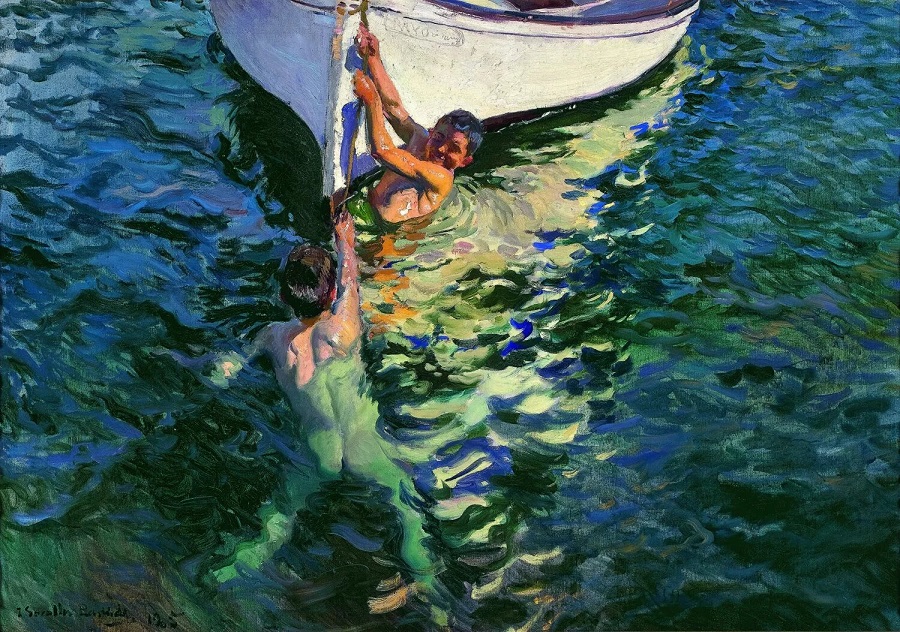
The White Boat (1905)
Sorolla's treatment of light, framing and colour in these paintings is masterful and as personal as it is unique. On the one hand, his work is very much in the vein of Impressionism but, at the same time, breaks away from it, through long brushstrokes and his colour palette. In 1905, he painted one of his masterpieces, "The White Boat", followed by even more famous and lauded paintings such as "Children at the Beach", "A Horse Bathing" or "Seaside Stroll" (all painted in 1909).
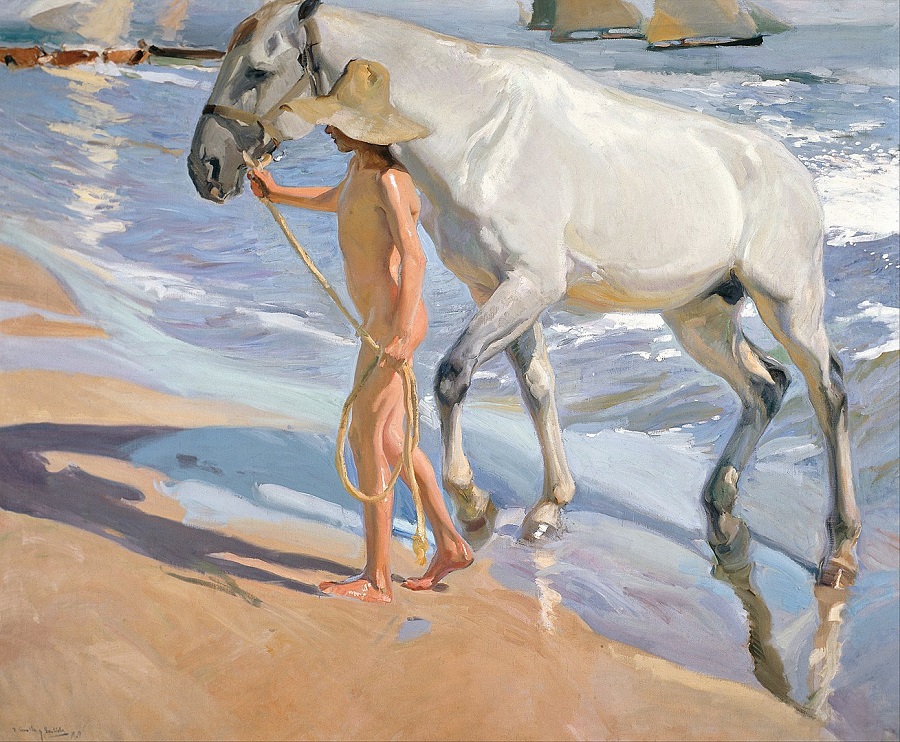
A Horse Bathing (1909)
The Hispanic Society panels: the work of a lifetime
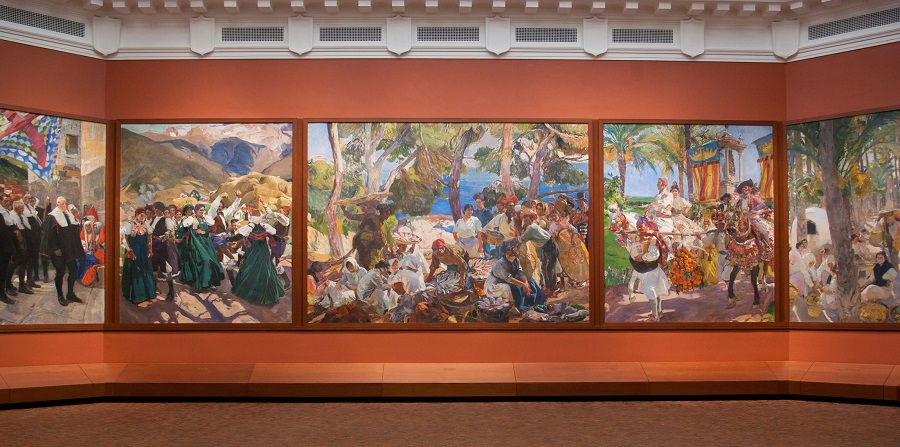
The Sorolla Gallery (north wall), Hispanic Society of America
1911 was a momentous year for Sorolla. The Hispanic Society of New York commissioned him to paint fourteen panels to decorate the library at its headquarters, an enormous task he undertook with enthusiasm, producing a series of paintings depicting scenes from different Spanish regions. Sorolla would define it as his "lifetime's work" and dedicate his final years to its completion. He was then living and working in Huelva from where, in 1919, he sent a telegram to his family announcing he had finished the last painting. The following year, he suffered a stroke that left him unable to travel to New York where he had planned to deliver, assemble and attend the inauguration of his work. The commission would thereby remain unresolved and the contract unsettled until after Sorolla's death in 1923 on the reading of his will.
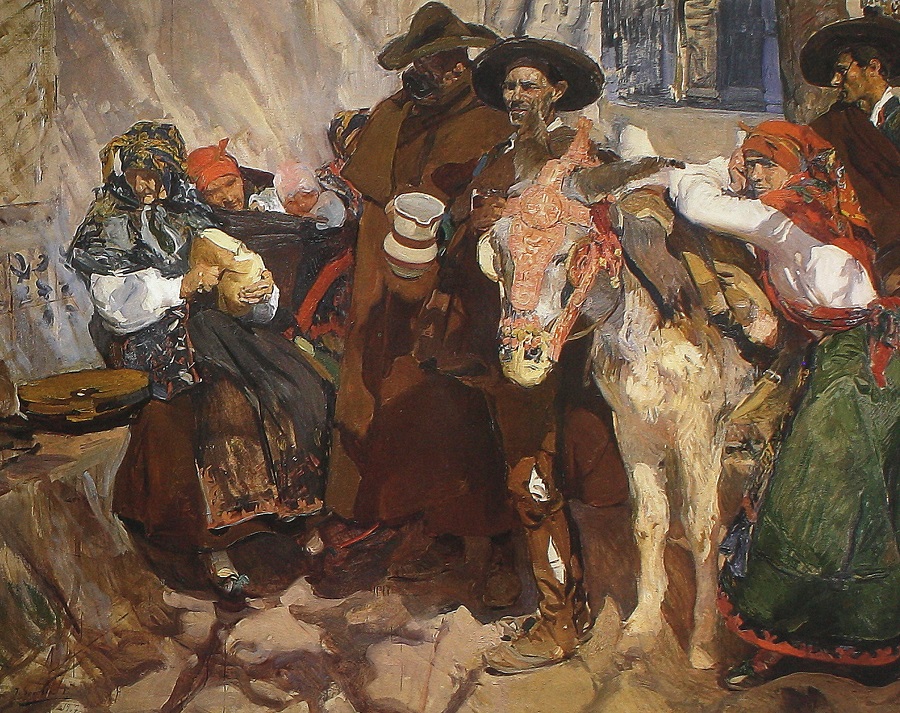
Sorolla Gallery (detail), Hispanic Society of America
In 1926, the gallery was finally inaugurated, bringing to a close a work that perfectly sums up Sorolla's style and technique. Although for a large part of the twentieth century, the advent of avant-garde and new pictorial schools forced Sorolla's work into the background, the latter decades saw a renewed interest in his paintings which, from then on, were to sell for astronomical prices and become much sought-after by museums and private collectors alike. Today, Sorolla is considered one of the greatest artists of the twentieth century and the most skillful at capturing the light of the Mediterranean on canvas.
Exhibitions
Joaquín Sorolla. 1863-1923 (2009)
In 2009, the Prado Museum organized its first retrospective of Sorolla's work. The exhibition was at that time the largest ever held to date, either in Spain or abroad, and brought together more than a hundred paintings. For the occasion, the Prado was loaned all fourteen of the panels that Sorolla painted as a commission for the library of the Hispanic Society of New York.
Sorolla: A Garden To Paint. Bancaja Foundation Valencia (2017)
A total of 120 paintings were selected for this exhibition in his hometown, organized by the Bancaja Foundation. Away from the classic seascapes and beach scenes that make up his best-known works, the exhibition focused on his passion for gardens and his depiction of them in paint. According to Sorolla, these places contained the "emotional parameters" so sought after by himself and other avant-garde painters.
Sorolla and Fashion. Thyssen-Bornemisza Museum and Sorolla Museum (2018)
In collaboration with Madrid's Sorolla Museum, the Thyssen-Bornemisza offered here an unprecedented and novel point of view. The paintings selected for the exhibition analyze the influence of fashion and clothing trends on Sorolla's painting. Seventy works, some of them never before exhibited, were displayed alongside outfits, accessories and garments of the period. Sorolla's canvases are a magnificent chronicle of the trends and fashion of the late nineteenth and early twentieth centuries, painted with the mastery and freedom of technique that characterize his work.
Sorolla: Spanish Master of Light. National Gallery, London (2019)
This retrospective by one of the most important museums in the world was one of the largest exhibitions of the Valencian painter's work ever organised outside Spain. For the occasion, London's National Gallery selected sixty masterpieces that cover the painter's entire trajectory from genre scenes of Spanish life to seascapes, beach scenes, portraits and garden views.
Books
“Eight essays on Joaquín Sorolla y Bastida”. VV.AA. (Nobel)
Successful republication of 'Eight essays on Joaquín Sorolla y Bastida', first published in 1909 on the occasion of the exhibition held that year at the headquarters of the Hispanic Society of America (New York). The exhibition welcomed some 170,000 visitors, which led to the publication of the texts in response to its resounding success. According to Blanca Pons-Sorolla, great-granddaughter and Sorolla expert, it is one of the most important books about her great-grandfather, that deserves to be "in every important museum and library in the world".
“Sorolla. Masterpieces”. Blanca Pons Sorolla. (El Viso)
The aim of this splendid compilation is to become the definitive publication about Joaquín Sorolla and his painting. The book uses high-resolution photographs of the artist's best works, including those that have been restored in recent years. Blanca Pons-Sorolla has personally ensured that the images remain as faithful to the originals as possible, as well as being responsible for the selection and writing of the accompanying texts.
“The Collected Letters of Joaquín Sorolla”. (Anthropos Barcelona)
This book includes the five hundred letters that Joaquín Sorolla exchanged with his friend Pedro Gil Moreno de Mora, who he met in Rome in 1885 during his stay and scholarship there. Although they rarely met up in person, they both kept up the friendship over decades through their correspondence. The letters are documentation of great historical relevance, revealing the intimate personality of the painter as well as his pictorial and artistic concerns.
(Translated from the Spanish by Shauna Devlin)
- Joaquín Sorolla: Biography, Works and Exhibitions - - Alejandra de Argos -

